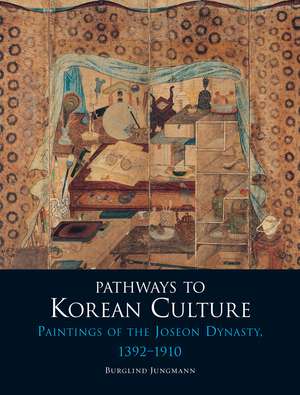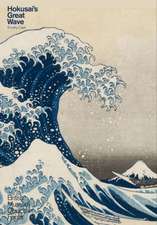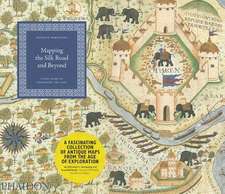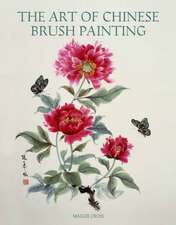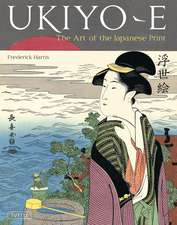Pathways to Korean Culture: Paintings of the Joseon Dynasty, 1392-1910
Autor Burglind Jungmannen Limba Engleză Hardback – 14 noi 2014
The Joseon Dynasty in Korea lasted over five centuries and saw the height of classical Korean culture, leaving a lasting imprint on the attitudes and traditions of Korea today. In Pathways to Korean Culture, Burglind Jungmann provides a survey of the important developments in Korean art and visual culture during the Joseon Dynasty and introduces Joseon painting to the wider world.
In addition to discussing the more well-known ink paintings of the literati elite, Jungmann investigates the role of women as artists and patrons, the use of the ideals of Chinese antiquity for political purposes, and the role of painting in foreign exchange and as a means of escapism. She also explores the support of Buddhist products in a society governed by Confucian ideology and court projects done to document important events and decorate palaces. Jungmann unwraps the layers of personal, intellectual, aesthetic, religious, socio-political, and economic contexts within which these paintings are embedded, casting new light on the conditions of this period. Tying in with exhibitions at the Los Angeles County Museum of Art in June, 2014 and the Museum of Fine Arts, Houston in November, 2015, Pathways to Korean Culture fills an immense gap in the literature on this period of Korean art.
In addition to discussing the more well-known ink paintings of the literati elite, Jungmann investigates the role of women as artists and patrons, the use of the ideals of Chinese antiquity for political purposes, and the role of painting in foreign exchange and as a means of escapism. She also explores the support of Buddhist products in a society governed by Confucian ideology and court projects done to document important events and decorate palaces. Jungmann unwraps the layers of personal, intellectual, aesthetic, religious, socio-political, and economic contexts within which these paintings are embedded, casting new light on the conditions of this period. Tying in with exhibitions at the Los Angeles County Museum of Art in June, 2014 and the Museum of Fine Arts, Houston in November, 2015, Pathways to Korean Culture fills an immense gap in the literature on this period of Korean art.
Preț: 317.66 lei
Preț vechi: 359.55 lei
-12% Nou
Puncte Express: 476
Preț estimativ în valută:
60.79€ • 63.23$ • 50.19£
60.79€ • 63.23$ • 50.19£
Carte disponibilă
Livrare economică 24-31 martie
Preluare comenzi: 021 569.72.76
Specificații
ISBN-13: 9781780233673
ISBN-10: 1780233671
Pagini: 304
Ilustrații: 150 color plates, 30 halftones
Dimensiuni: 191 x 249 x 36 mm
Greutate: 1.44 kg
Editura: REAKTION BOOKS
Colecția Reaktion Books
ISBN-10: 1780233671
Pagini: 304
Ilustrații: 150 color plates, 30 halftones
Dimensiuni: 191 x 249 x 36 mm
Greutate: 1.44 kg
Editura: REAKTION BOOKS
Colecția Reaktion Books
Notă biografică
Burglind Jungmann is professor of Korean art at the University of California, Los Angeles, and the author of Painters as Envoys: Korean Inspiration in Eighteenth-Century Japanese Nanga.
Cuprins
Introduction
PART I
THE EARLY JOSEON DYNASTY: NEO-CONFUCIAN
IDEALS AND STRATEGIES OF RECLUSION
One Chinese Antiquity as an Ideal of Paradise
Two Court Traditions and Literati Styles
Three Women as Artists and Patrons
Four Strategies of Reclusion
Five Escapism and Diplomatic Exchange: Kim Myeongguk and Han Sigak
PART II
NATIVE THEMES VERSUS FOREIGN STYLE
Six e Korean Reception of the ‘Southern School of Painting’
Seven Between Old and New: Yun Duseo and Jo Yeongseok
Eight e Question of ‘True Scenery’
Nine Facets of Literati Art: Sim Sajeong and Gang Sehwang
Ten Individualist and Eccentric: Yi Insang and Choe Buk
Eleven Orthodoxy and Revival: From Kim Jeonghui to An Jungsik
PART III
DOCUMENTATION, DECORATION AND DISPLAY:
FROM COURT PAINTING TO FOLK ART
Twelve Painting Production at Court
Thirteen e Case of Kim Hongdo
Fourteen Court Painting and Minhwa
References
Bibliography
Index of Characters
Index of Painters
Acknowledgements
Photo Acknowledgements
Index
6
PART I
THE EARLY JOSEON DYNASTY: NEO-CONFUCIAN
IDEALS AND STRATEGIES OF RECLUSION
One Chinese Antiquity as an Ideal of Paradise
Two Court Traditions and Literati Styles
Three Women as Artists and Patrons
Four Strategies of Reclusion
Five Escapism and Diplomatic Exchange: Kim Myeongguk and Han Sigak
PART II
NATIVE THEMES VERSUS FOREIGN STYLE
Six e Korean Reception of the ‘Southern School of Painting’
Seven Between Old and New: Yun Duseo and Jo Yeongseok
Eight e Question of ‘True Scenery’
Nine Facets of Literati Art: Sim Sajeong and Gang Sehwang
Ten Individualist and Eccentric: Yi Insang and Choe Buk
Eleven Orthodoxy and Revival: From Kim Jeonghui to An Jungsik
PART III
DOCUMENTATION, DECORATION AND DISPLAY:
FROM COURT PAINTING TO FOLK ART
Twelve Painting Production at Court
Thirteen e Case of Kim Hongdo
Fourteen Court Painting and Minhwa
References
Bibliography
Index of Characters
Index of Painters
Acknowledgements
Photo Acknowledgements
Index
6
Recenzii
“Pathways to Korean Culture is a wide-ranging synthetic analysis of the paintings of Korea’s Joseon dynasty (1392–1910), that takes a comprehensive look at its history and visual culture. The publication of this book should be welcomed by anyone who has an interest in Korean painting. . . . With masterly erudition and thorough discernment, Jungmann has written here what is certain to be the standard guide to the history of Joseon painting. . . . The best and most comprehensive overview of Joseon painting from the West to date, encouraging much thoughtful, cohesive analysis of Korean painting to follow.”
“This is a valuable, original, and accessible overview of a rich and multilayered artistic tradition that is not well understood outside Korea.”
“Jungmann has done a marvelous job. I believe [the book] will certainly be a great contribution to the field of East Asian studies.”
“Of great importance in enhancing our understanding of Joseon painting and of Korean painting as a whole.”
